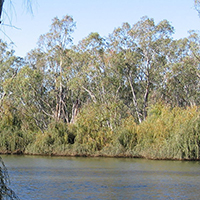Cladocera resting egg banks in temporary and permanent wetlands

All claims expressed in this article are solely those of the authors and do not necessarily represent those of their affiliated organizations, or those of the publisher, the editors and the reviewers. Any product that may be evaluated in this article or claim that may be made by its manufacturer is not guaranteed or endorsed by the publisher.
Authors
Cladocerans are important filter-feeders transferring energy up the food web to different invertebrate and vertebrate predators. Along the flood period, cladocerans are one of the primary food sources for juvenile fish in floodplain. Resting egg banks allow cladoceran populations to overcome the environmental stress, related to several limnological changes, including complete drying of temporary wetlands. After drought, resting egg banks influence cladoceran community attributes during the cyclic and successional processes driven by episodic flood events. In this study we compared the taxonomic richness of active (from the water column) and dormant (from the sediment) Cladocera assemblages and analyzed the structure of resting egg banks, comparing the diversity, abundance and apparent viability/unviability of the eggs, between six temporary and six permanent wetlands, located along the Ovens River Floodplain, Victoria, Australia. The qualitative analysis shows higher taxonomic richness in active assemblages from temporary (24 taxa) than permanent (13 taxa) wetlands compared to dormant assemblages present in resting egg banks (9 taxa) from temporary and permanent wetlands. However, richness was influenced by taxonomic level of identification, with the majority of resting eggs only being identified to the taxonomic level of family (i.e. Chydoridae). Total taxa richness within egg banks was similar between wetland types, however, on average higher Shannon’s diversity of resting eggs was found within permanent (1.53) than temporary (0.82) wetlands. This is likely to be due to more stable wetlands not providing appropriate cues to trigger dormancy induction or breakage for specific populations, leading to higher values of evenness in permanent than temporary wetlands. Comparing permanent and temporary wetlands, higher abundance of resting eggs (more than four times) consisting of higher abundance of unviable eggs and similar viable egg abundance to permanent wetlands, was found within temporary wetlands, suggesting that the increased resting egg abundance in temporary wetlands is balanced by the losses due to factors such as predation, parasitism or other physical damage, during the terrestrial phase. Despite resistant outer shell structure, this study highlights that the damage to egg integrity is intensified in wetlands that undergo dry phases. Cladoceran resting egg banks represent the potential assemblage to recover after disturbance events such as drying, and information about these is important to ensure appropriate management and conservation of floodplain biodiversity.
Edited by
Giampaolo Rossetti, Dept. of Bioscences, University of Parma, ItalySupporting Agencies
the Fundação de Amparo à Pesquisa do Estado de Minas Gerais (FAPEMIG)How to Cite

This work is licensed under a Creative Commons Attribution-NonCommercial 4.0 International License.







